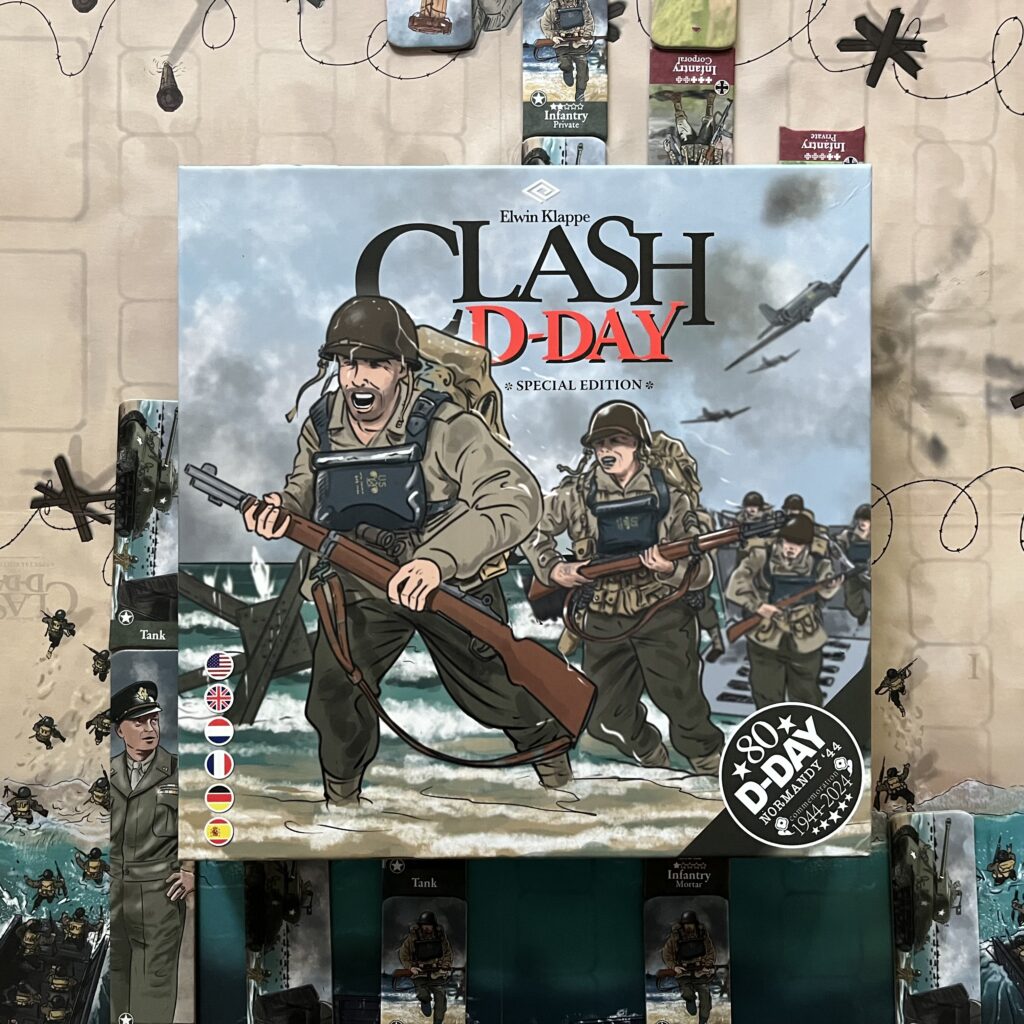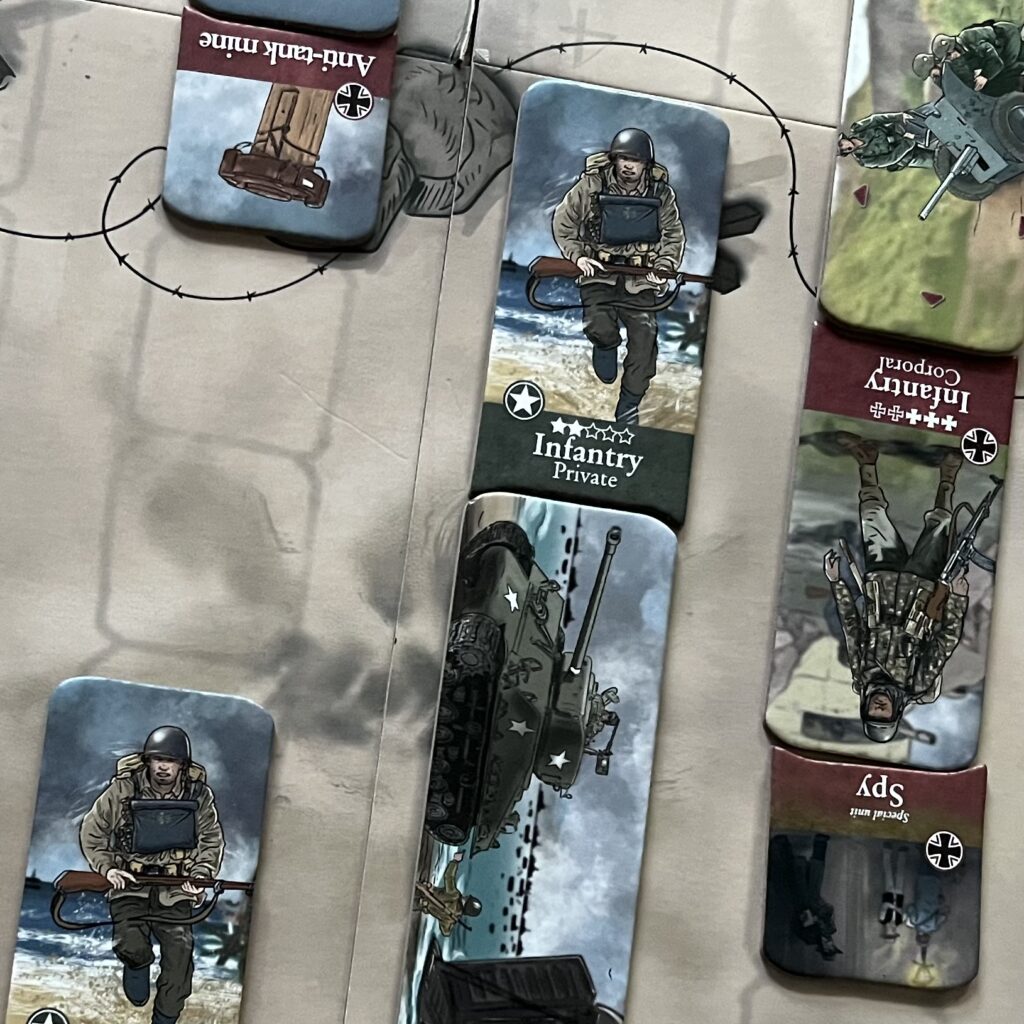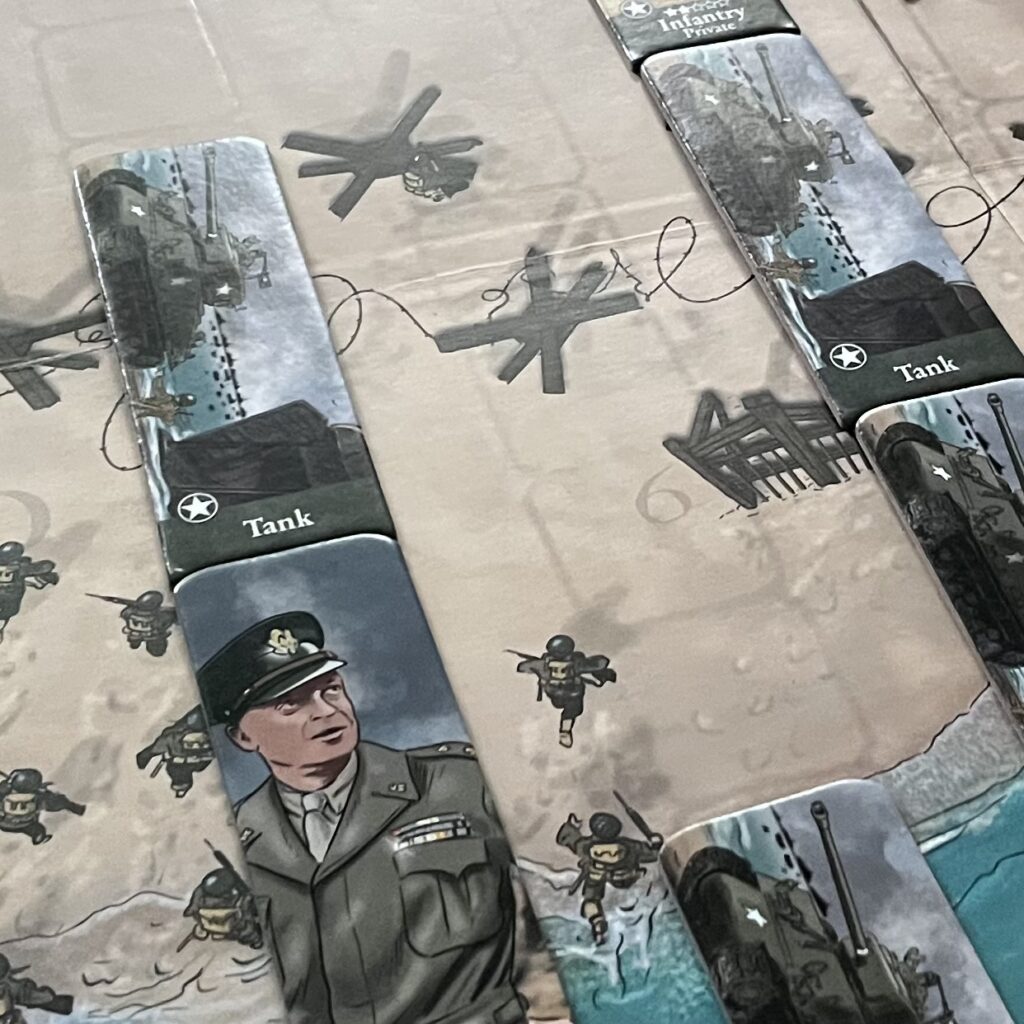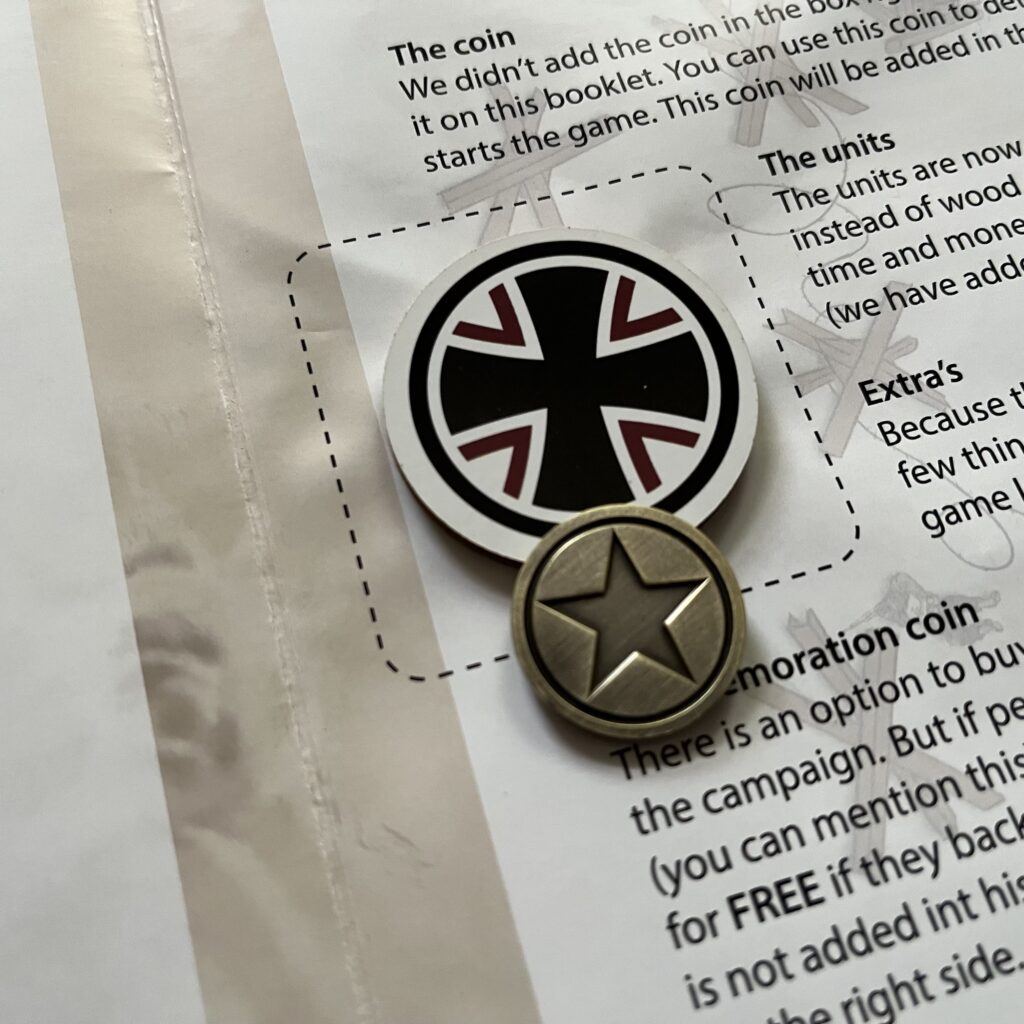Re-enact an important event from during World War II in Clash D-Day by Elwin Klappe, now available through Gamefound. This month we commemorate 80 years since Allied troops reached the coast of Normandy to liberate France and the rest of Europe from the Axis powers. That happened on June 6, 1944. In other words: D-Day.
Clash D-Day is a revised edition of Clash of the Ardennes. That game appeared in 2022 after a successful Kickstarter campaign. Conceived and published by Dutch game author Elwin Klappe, the game featured a handy insert and the deluxe edition included wooden game pieces and a wooden frame instead of a game board. The clash of the Ardennes (also called “Battle of the Bulge” because of the somewhat explicit shape of the front line) was one of the last larger ground offensives during the approaching end of World War II. This battle was an extremely tough one. Deplorable weather conditions. Impassable roads. The use of heavy weapons and armored vehicles. About 80,000 were killed and wounded by both the Allies and Germans. D-Day was also a wretched battle in which many soldiers lost their lives and colored the beaches of Normandy red. An essential event during the war, but no less gruesome.

From the publisher we received a prototype of Clash D-Day to test. This is a protoype so not all the game material is final yet and thus may still change. The actual edition will possibly be a lot more luxurious in execution depending on the performance of the crowdfunding campaign. So check Gamefound soon if you are interested. Much of the game will be similar to Clash of the Ardennes in that, like that game, Clash D-Day is a tactical tug-of-war between two players. Players deploy their troops to advance o the battlefield and earn points by capturing strips and reaching the other side of the game board.
For those unfamiliar with Clash: Clash is a two-player game that consists of a playing board where players fight their battles. Fighting the battle is done by players with their troops. In this case, those are large and sturdy cardboard boards of different sizes. There are different troops in different ranks. In battles, the type of troop plays a role and the outcome of the battle is decided based on a rock-paper-scissors-like system. Rank also plays an important role, of course.
At the beginning of the game, players are given their troops and objectives to settle the game. Because of this, the way to win (or lose) this game is also quite unique. In fact, the goal card describes the way players can win and lose the game. Because of this, the game has a great game variation which can make every game feel different. You must therefore keep a close eye on your opponent’s actions. Before you know it, you’ve lost the battle. As I wrote in my review of Ardennes: the fog of war has never been so foggy.


How do players clash in Clash? Each turn, a player has a number of action points. With these action points, a player can place, move or retreat troops. As mentioned, the troops are playing pieces of various lengths that players place in the strips on the field. Once the playing pieces are lined up face to face and against each other, fighting can begin, with the strongest piece winning. Which piece is the strongest depends on which pieces are facing each other. For example, a tank defeats infantry, a bomb leaves the tank and infantry defeat a bomb. The higher rank of a given card naturally defeats a lower rank. Once a player reaches the other player’s side with a strip, that player has won a front. There are also a number of playing pieces with a unique characteristic that can turn the course of the game around. For example, there are troops that can defeat troops on completely different strips.
Clash still feels like a very streamlined game of militaristic tug-of-war with a thick layer of tactics and bluster. Because of all the different troops, there are multiple play styles and corresponding tactics. You know which troops another player can deploy, but you don’t know when and how they will use their troops. If a player has conquered a strip they get a token, but those troops on that strip are no longer deployable. So timing is essential, just like in a real military operation.




